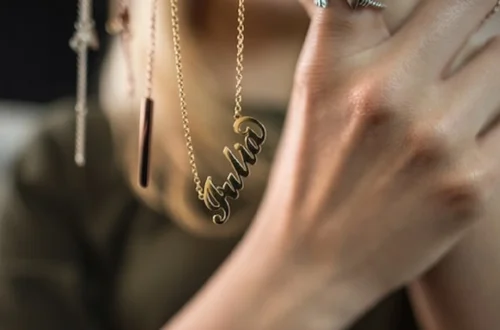When it comes to nasal surgery, two terms frequently arise: rhinoplasty and septoplasty. While both aim to improve nasal function and aesthetics, they serve distinct purposes and involve different surgical techniques. Understanding the goals and outcomes of each procedure is essential for anyone considering nasal surgery. In this comprehensive guide, we’ll delve into the intricacies of rhinoplasty and septoplasty, clarifying their objectives, techniques, and potential outcomes.
Rhinoplasty: Enhancing Nasal Aesthetics And Functionality
Rhinoplasty, often referred to as a “nose job,” is a surgical procedure focused on reshaping the nose for cosmetic or functional purposes. Changes to the nose’s size, shape, or balance are meant to make it look better. Additionally, rhinoplasty can address structural issues within the nose that may impede proper breathing, such as deviated septum or enlarged turbinates.
The Goals Of Rhinoplasty:
Cosmetic Enhancement: Many individuals seek rhinoplasty to enhance the aesthetic appearance of their nose. This may involve reducing the size of a prominent nasal hump, refining the tip, or narrowing the nostrils to achieve better facial harmony.
Functional Improvement: Beyond cosmetic concerns, rhinoplasty can also improve nasal function. By correcting structural abnormalities like a deviated septum or nasal valve collapse, patients may experience enhanced breathing and airflow.
Psychological Well-Being: Rhinoplasty can have a profound impact on an individual’s self-confidence and self-esteem. Addressing perceived nasal imperfections can lead to increased satisfaction with one’s appearance and improved overall well-being.
The Rhinoplasty Procedure:
Rhinoplasty is a highly customized procedure tailored to each patient’s unique anatomy and aesthetic goals. Depending on how much correction is needed and the surgeon’s opinion, it can be done with either an open or a closed approach.
In an open rhinoplasty, the surgeon cuts across the columella, which is the strip of tissue between the nostrils. This lets them get to the structures inside the nose directly. This method gives you better sight and accuracy, so it can be used for more complicated nasal deformities.
Conversely, a closed rhinoplasty involves making incisions entirely within the nostrils, avoiding any visible external scars. While this technique may be preferable for minor nasal modifications, it may limit the surgeon’s visibility and maneuverability.
Outcomes Of Rhinoplasty:
The outcomes of rhinoplasty can vary depending on the patient’s anatomy, surgical technique, and postoperative care. While most patients experience improved nasal aesthetics and function, it’s essential to have realistic expectations regarding the final results.
In the weeks and months following rhinoplasty, swelling and bruising are common, gradually subsiding to reveal the final outcome. Full recovery may take several months, during which patients should follow their surgeon’s instructions for optimal healing and results.
Septoplasty: Correcting Structural Nasal Issues For Improved Breathing
Unlike rhinoplasty, which is mostly about improving the way the nose looks, septoplasty is a surgery that fixes problems inside the nose that can block airflow and make it hard to breathe. The most common issue addressed through septoplasty is a deviated septum, where the partition between the nasal passages is crooked or displaced.
The Goals Of Septoplasty:
Correcting Nasal Obstruction: Septoplasty aims to realign the deviated septum, ensuring that both nasal passages are open and unobstructed. By straightening the septum, airflow is improved, leading to easier breathing and reduced nasal congestion.
Resolving Chronic Symptoms: Many individuals with a deviated septum experience chronic nasal congestion, difficulty breathing through the nose, recurrent sinus infections, and snoring. Septoplasty can alleviate these symptoms, enhancing overall nasal function and quality of life.
Facilitating Rhinoplasty: In some cases, septoplasty may be done along with rhinoplasty to solve both practical and cosmetic problems at the same time. By correcting nasal obstruction, septoplasty can optimize the outcomes of rhinoplasty and improve patient satisfaction.
The Septoplasty Procedure:
Most of the time, septoplasty is done as an outpatient treatment with either local or general anesthesia. To get to the septum during the surgery, the surgeon makes a cut inside the nose. Once that is done, they gently move and reshape the septal cartilage and bone to fix any problems.
Sometimes, other surgeries like turbinate reduction or nasal valve repair may be done at the same time as septoplasty to make the nose work and move better.
Outcomes Of Septoplasty:
People who have a crooked septum may be able to breathe better and live a better overall quality of life after surgery to fix the septum. While some swelling and congestion are expected in the immediate aftermath of surgery, most patients experience a noticeable improvement in nasal airflow within a few weeks.
It’s important to note that septoplasty may not completely eliminate all nasal symptoms, particularly if other underlying issues such as allergies or sinusitis are present. However, for many individuals, septoplasty provides long-lasting relief from chronic nasal obstruction and associated symptoms.
Conclusion:
In summary, rhinoplasty and septoplasty are distinct surgical procedures with different goals and outcomes. Rhinoplasty focuses on enhancing nasal aesthetics and function, addressing cosmetic concerns and structural abnormalities that may affect breathing. In contrast, septoplasty is specifically aimed at correcting a deviated septum and improving nasal airflow and breathing.
There are many reasons to see a skilled and experienced surgeon for nasal surgery. They can help you decide which treatment plan will work best for you, whether you want to improve your appearance or your ability to breathe. If you know the differences between rhinoplasty and septoplasty, you can make an educated choice that will improve your nasal health and look. For further insights on the distinctions between these procedures, visit https://www.drgeorgebrennan.com/difference-between-rhinoplasty-and-septoplasty/.





